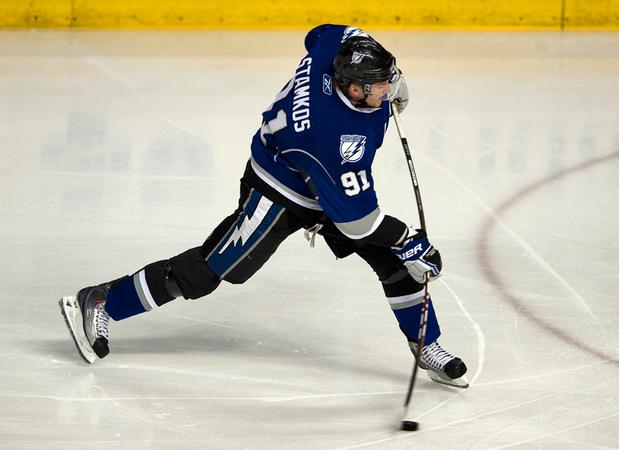| Back |
Home |
Next |
The Physics of Shooting the Puck
| Shooting
Mechanics In order to shoot the puck, the player must first exert a greater force on the puck than the frictional forces resisting the puck's movement. To do this the player uses a hockey stick and because of the way they are specially designed it allows the player to lift the puck into the air with great force. While being shot, the puck travels along the sticks blade and due to the curvature and loft of the blade it is then lifted off the surface of the ice. The curvature of the blade also adds an amount of spin which stabilizes and provides better accuracy to the shot.  - http://www.elginpk.com Also crucial to the shot is the flex of the stick. When the stick is flexed it provides a spring like force when coming into contact with the puck, propelling it forward with a much greater force than could be applied with an unbending stick. |
Projectile
Motion "After the a shot is fired off a player's stick, the puck travels through the air with parabolic projectile motion. The puck will also continue its flight into the net or into the hands of the goalie. Most of the time the puck is fired at such a high velocity that spectators cannot see the puck's entire trajectory. This is why the glass in an arena needs to be built pretty high for safety reasons; a flying puck will continue along its path until it loses its vertical velocity due to gravity, or until it impacts something such as the glass. This is an example of Newton's first law." - http://physicsofhockeyproject.weebly.com  - www.calgaryherald.com As it
is flying through the air the forces applied by the
player during the shot are still acting on the puck.
The spin applied by the curvature of the blade
provides stability and the force enacted continues
to propel it through the air.
|